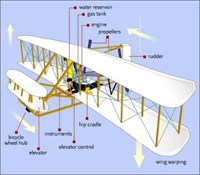- Field Trips (6)
- Lesson Plan (3)
- Acadia National Park (3)
- Tumacácori National Historical Park (2)
- Dayton Aviation Heritage National Historical Park (1)
- George Washington Carver National Monument (1)
- Longfellow House Washington's Headquarters National Historic Site (1)
- Niobrara National Scenic River (1)
- Wright Brothers National Memorial (1)
- Science (6)
- Social Studies (5)
- Literacy and Language Arts (3)
- Math (1)
Showing 9 results for sensory ...
Two Poems on the Charles River: Sensory Poetry About Place
- Type: Lesson Plan
- Grade Levels: Upper Elementary: Third Grade through Fifth Grade
In this 2-part activity, 3rd-5th grade students will explore the use of descriptive sensory language to convey a sense of place through poetry. After watching a short video featuring Longfellow’s “To the River Charles” and Yolanda Oliveira’s “Clockwork Stream,” students will analyze descriptive language in poem excerpts, then brainstorm and write their own place-based poem.
At Home in Acadia (Kindergarten)
- Type: Field Trips
- Grade Levels: Lower Elementary: Pre-Kindergarten through Second Grade
At Home in Acadia (1st Grade)
- Type: Field Trips
- Grade Levels: Lower Elementary: Pre-Kindergarten through Second Grade
At Home in Acadia (2nd Grade)
- Type: Field Trips
- Grade Levels: Lower Elementary: Pre-Kindergarten through Second Grade
Create a Brochure
- Type: Field Trips
- Grade Levels: Middle School: Sixth Grade through Eighth Grade
Students will take a field trip to an area of the Niobrara River Valley. During the trip they will use observation techniques and complete a Sensory Observation Sheet and use those ideas to prepare a brochure for a vacation would be taken in the Niobrara River valley.
Tumacácori in Five Senses - PreK -1
River Ramble
- Type: Field Trips
- Grade Levels: Upper Elementary: Third Grade through Fifth Grade

This exploratory walk highlights the ecology of the Santa Cruz River Valley. This program will also touch upon the importance of river corridors as locations for traditional O’odham villages. Students will learn about the plants that were used for clothing, tools, and food. Learning will involve inquiry, sensory activities, and language arts.




